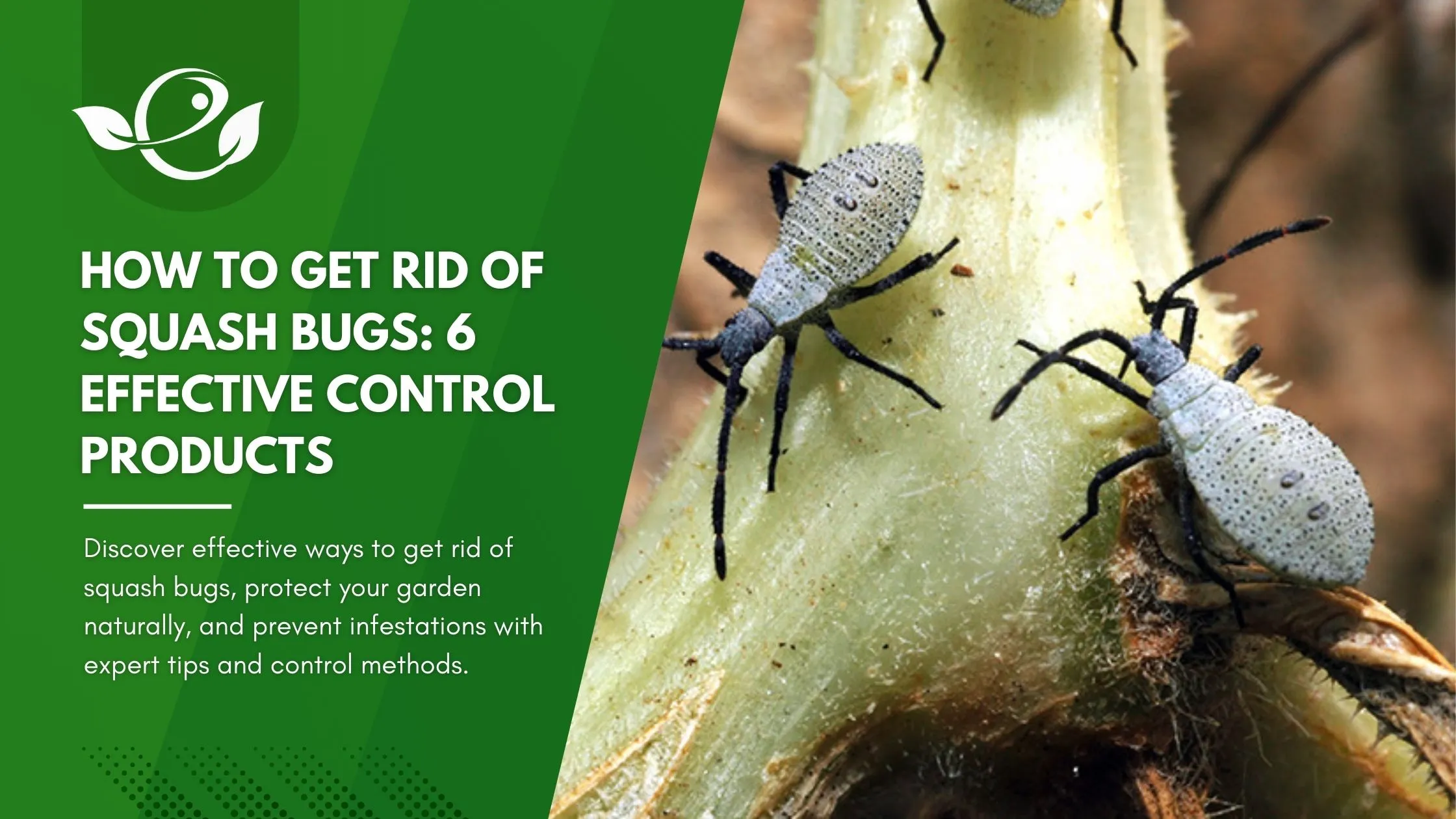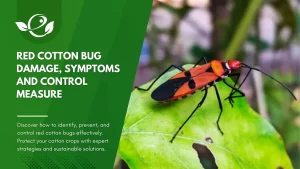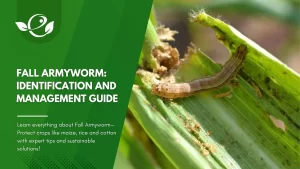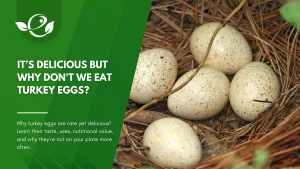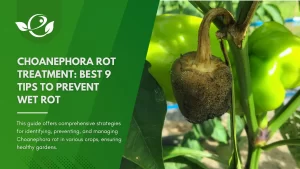Table of Contents
Squash bugs are a common yet formidable pest that many American gardeners face, particularly when growing cucurbit plants like squash, zucchini, and pumpkins. These resilient insects can cause significant damage, leading to wilted leaves, stunted growth, and even complete crop loss if left unchecked. For home gardeners and commercial growers alike, understanding how to effectively manage squash bugs is essential to safeguarding your harvest.
This comprehensive guide provides a step-by-step approach to identifying, controlling, and preventing squash bug infestations. Whether you prefer natural remedies, organic solutions, or advanced pest control methods, you’ll find practical tips to keep your garden healthy and thriving. From handpicking strategies to professional pest control options, we’ve covered every angle to help you make informed decisions and maintain a bug-free garden.
What Are Squash Bugs?
Squash bugs (Anasa tristis) are persistent pests that primarily target plants in the cucurbit family, including squash, zucchini, pumpkins, and cucumbers. They are often mistaken for stink bugs due to their similar appearance, but squash bugs have distinct features and behaviors that set them apart.
- Adults: Squash bugs are about ½ inch long and have a flat, shield-shaped body. Their coloration is brownish-gray with orange or bronze markings on the edges.
- Nymphs: Immature squash bugs, or nymphs, are smaller, wingless, and pale gray with black legs. They molt several times before reaching adulthood.
- Eggs: Squash bug eggs are oval, bronze-colored, and laid in clusters on the undersides of leaves.
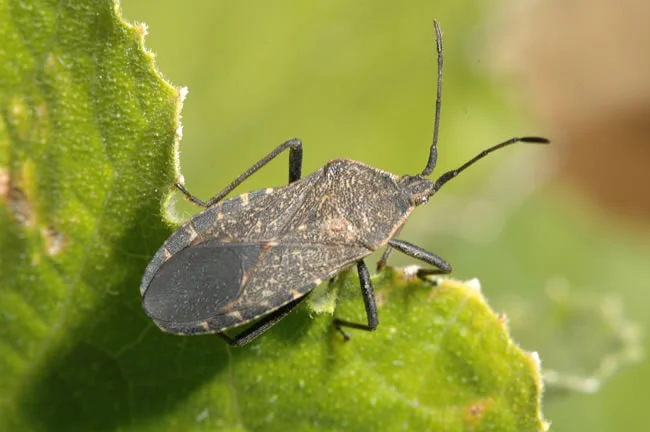
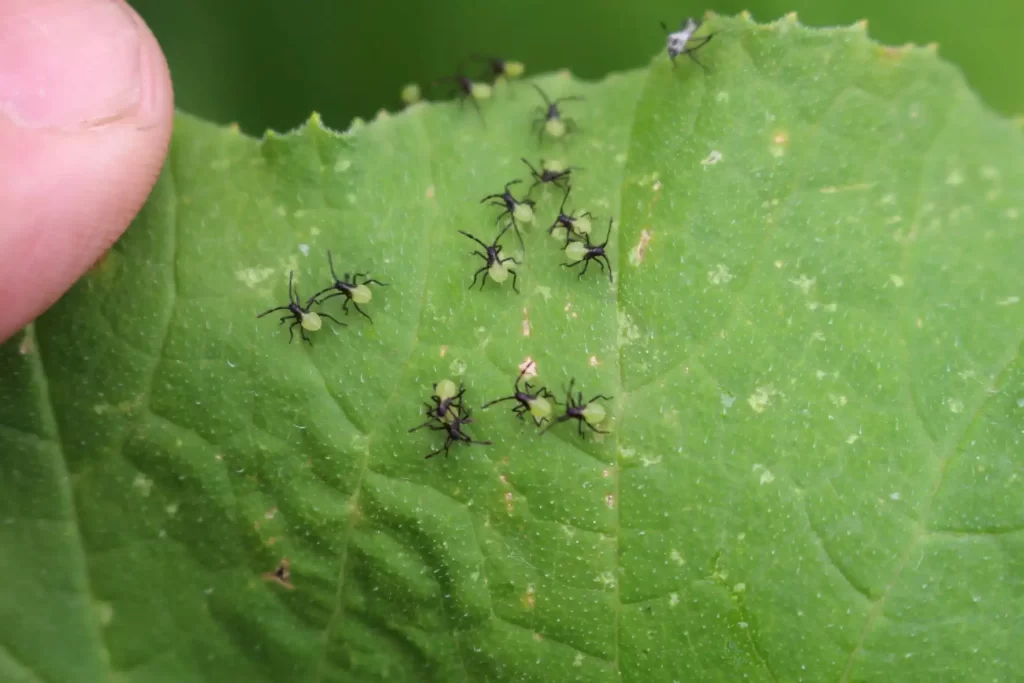
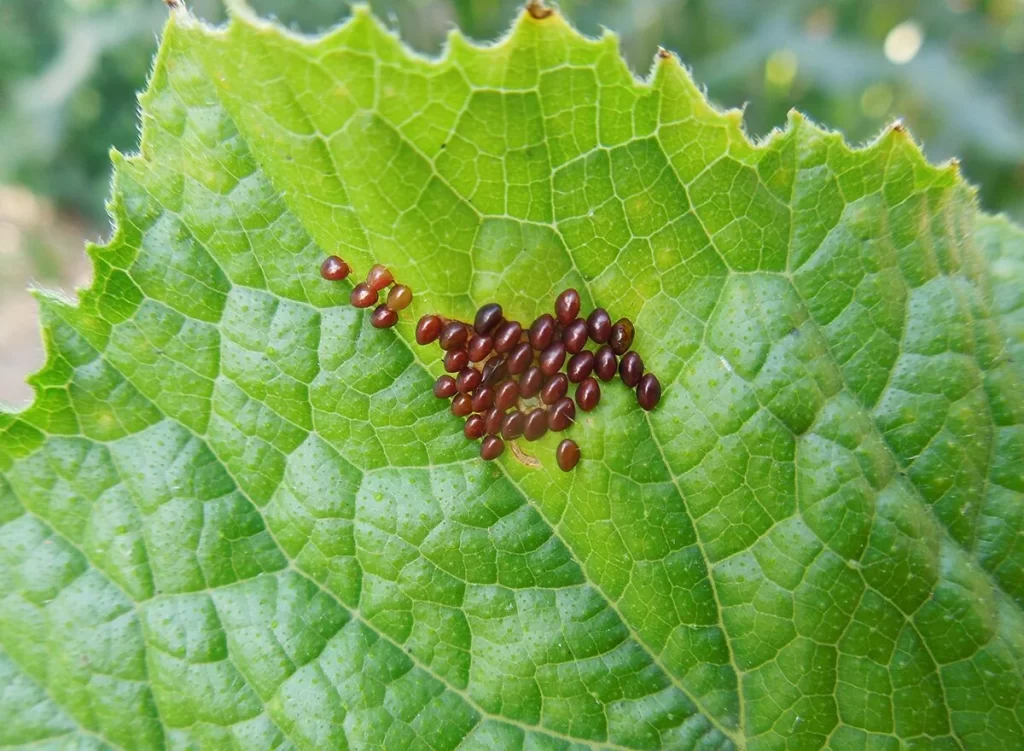
Squash bugs thrive in warm, dry climates and are most active during the growing season. They are slow-moving and prefer to hide in plant debris or at the base of plants, making them challenging to spot. Squash bugs feed by piercing plant tissues and sucking out sap, causing significant damage over time. They release an unpleasant odor when crushed, similar to stink bugs, as a defense mechanism.
Fun Fact: The entire life cycle from egg to adult takes 4-6 weeks, allowing multiple generations in a single growing season.
Signs of Squash Bug Infestation
Early detection is key to managing squash bugs effectively. Here are the primary signs that indicate their presence:
Visible Signs of Bugs
- Adults: Look for the distinctive brownish-gray bugs on stems, undersides of leaves, or the soil near your plants. They often cluster in groups, especially during early morning or late evening.
- Nymphs: Young squash bugs are more mobile and can be found crawling on leaves or stems. Their smaller size makes them harder to spot, so thorough inspections are essential.
Egg Clusters
- Inspect the undersides of leaves for clusters of small, shiny bronze eggs. These eggs are usually laid along the veins and are often found in groups of 10-20.
- Regularly checking leaves can help you remove eggs before they hatch, significantly reducing the pest population.
Plant Damage Symptoms
- Wilting: One of the first signs of squash bug feeding is wilting, particularly on young or tender plants. This occurs because the bugs drain sap from the stems.
- Yellowing Leaves: Feeding causes chlorosis (yellowing) of the leaves, which eventually leads to browning and death.
- Stunted Growth: Heavily infested plants may fail to grow properly or produce healthy fruits.
Additional Indicators
- Sticky Residue: Squash bugs leave behind dark, sticky excrement on leaves and stems.
- Crispy Edges: Leaf edges may dry out and turn crispy, resembling drought stress, even when plants are well-watered.
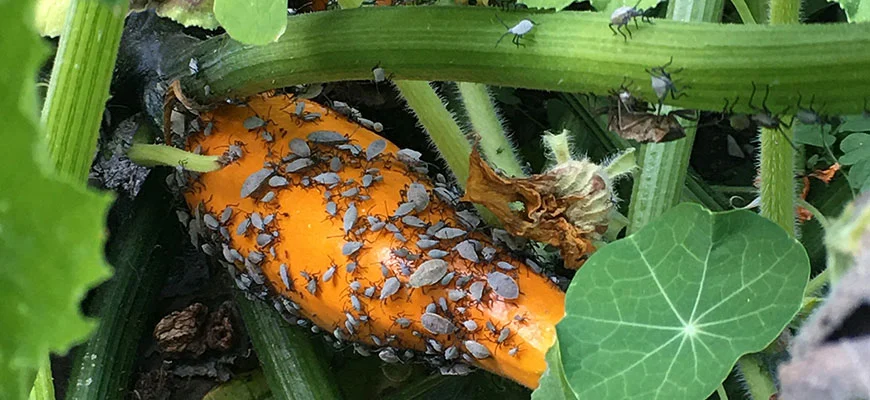
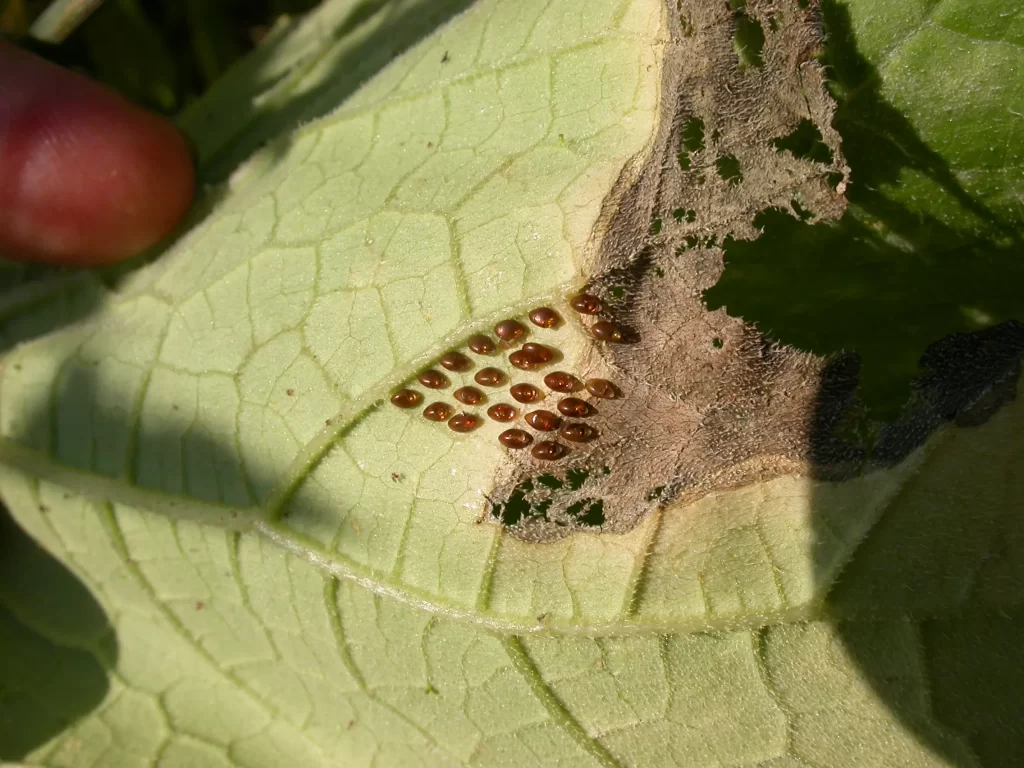
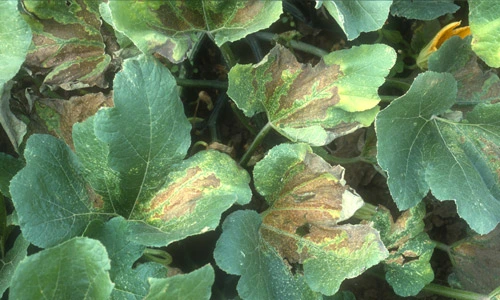
By recognizing these signs early, you can take immediate action to prevent further damage and control the infestation.
How To Get Rid Of Squash Bugs Naturally
Natural remedies are often the first choice for American gardeners looking to manage squash bugs effectively while maintaining an eco-friendly garden. Here are the best natural methods, tailored for home gardens across the United States:
1. Handpicking Squash Bugs
- Why It Works: Handpicking is one of the most effective ways to reduce squash bug populations without harming beneficial insects or the environment.
- How To Do It:
- Inspect plants daily, especially early in the morning when squash bugs are less active.
- Use gloves to manually remove adult bugs, nymphs, and egg clusters.
- Drop the pests into a bucket of soapy water to kill them. Avoid crushing them on the plant, as this may release a foul odor.
- Pro Tip: Pair this method with regular leaf inspections to catch egg clusters early.
2. Using Traps
- Why It Works: Traps exploit the squash bugs’ tendency to hide during the night.
- How To Do It:
- Lay wooden boards, shingles, or damp newspapers around the base of your plants in the evening.
- In the morning, check under these traps and collect the bugs hiding there.
- Dispose of them in soapy water or a sealed bag.
- Pro Tip: Rotate the location of traps to ensure thorough coverage.
3. Neem Oil and Insecticidal Soap
- Why It Works: These natural solutions target bugs without harming beneficial pollinators like bees.
- How To Do It:
- Mix neem oil with water as directed on the label and spray directly onto squash bugs and egg clusters.
- Insecticidal soap can be applied similarly to smother the bugs.
- Reapply every 7-10 days or after heavy rainfall for sustained protection.
- Pro Tip: Focus on spraying the undersides of leaves, where squash bugs often hide.
4. Diatomaceous Earth
- Why It Works: This natural powder damages the exoskeletons of squash bugs, leading to dehydration and death.
- How To Do It:
- Lightly dust food-grade diatomaceous earth around the base of plants and on leaves.
- Reapply after watering or rainfall.
- Pro Tip: Avoid inhaling the powder and use it sparingly to minimize disruption to beneficial soil organisms.
5. Attracting Beneficial Insects
- Why It Works: Natural predators help keep squash bug populations in check.
- How To Do It:
- Plant flowers like marigolds, cosmos, dill, and fennel to attract tachinid flies, parasitic wasps, and other beneficial insects.
- Provide a water source and shelter to encourage these predators to stay in your garden.
- Pro Tip: Avoid broad-spectrum insecticides that may harm beneficial species.
6. Companion Planting
- Why It Works: Certain plants can deter squash bugs or attract them away from your crops.
- How To Do It:
- Plant trap crops like nasturtiums to draw squash bugs away from your main plants.
- Use deterrent plants like radishes and marigolds alongside your cucurbits.
- Pro Tip: Position companion plants strategically to maximize their protective effect.
7. Maintaining Garden Hygiene
- Why It Works: Squash bugs thrive in debris and cluttered gardens.
- How To Do It:
- Clear away plant debris and dead leaves regularly.
- Till the soil in late fall to expose and kill overwintering squash bugs.
- Use mulch sparingly, as it can provide hiding spots for pests.
- Pro Tip: Combine hygiene practices with other natural methods for the best results.
By using these natural methods consistently and proactively, American gardeners can enjoy healthy squash plants and a thriving garden without resorting to harsh chemicals.
Best Organic and Chemical Controls
While natural methods are often sufficient, severe infestations may require additional measures. Organic and chemical controls are effective tools for managing squash bugs, but they must be used responsibly to minimize environmental impact.
1. Organic Pesticides
- Neem Oil: Derived from the neem tree, this oil disrupts the life cycle of squash bugs by acting as a growth regulator. Neem oil is best applied early in the morning or late in the evening to avoid harming pollinators. Use a spray solution as directed on the product label.
- Pyrethrin-Based Sprays: Pyrethrin, extracted from chrysanthemum flowers, is an effective organic pesticide that targets adult squash bugs. Spray it directly on bugs or plants in the early morning or evening.
- Spinosad: A naturally occurring soil bacterium, spinosad-based products are effective against nymphs and adult squash bugs. These products break down quickly in sunlight, so they’re best applied in the evening.
2. Biological Controls
- Tachinid Flies and Parasitic Wasps: Introduce beneficial insects into your garden. Tachinid flies lay eggs on adult squash bugs, and their larvae feed on the bugs from within. Parasitic wasps target eggs and nymphs.
- Predatory Beetles: Ground beetles and soldier beetles feed on squash bug eggs and nymphs, helping to control their population naturally.
3. Chemical Pesticides
For severe infestations, chemical pesticides may be necessary. Select products specifically labeled for squash bugs and follow application instructions carefully.
- Carbaryl (Sevin): A broad-spectrum insecticide effective against squash bugs. Use sparingly and avoid applying during flowering to protect pollinators.
- Permethrin: Effective against a wide range of pests, including squash bugs. Apply to the undersides of leaves where bugs often congregate.
- Bifenthrin: A pyrethroid insecticide that provides long-lasting control. Use as a last resort and follow label instructions to prevent environmental harm.
4. Integrated Pest Management (IPM)
Combining organic and chemical controls with natural methods ensures the most effective results.
- Start with preventative measures like companion planting and garden hygiene.
- Use organic pesticides or biological controls for moderate infestations.
- Reserve chemical pesticides for severe cases and always follow safety guidelines.
Effective Squash Bug Control Products
Neem Oil Concentrates:
Pyrethrin-Based Insecticides
Diatomaceous Earth
Insecticidal Soaps:
Preventing Squash Bug Infestations
Prevention is the cornerstone of effective squash bug management. By taking proactive steps to minimize squash bug populations and make your garden less attractive to these pests, you can safeguard your crops from severe damage. Here’s how American gardeners can implement comprehensive prevention strategies:
- Remove Plant Debris: Squash bugs overwinter in garden debris, dead leaves, and woodpiles. Clearing your garden of plant debris after harvest is critical to disrupting their life cycle.
- Compost Management: Avoid leaving compost piles near your cucurbit crops, as they can become breeding grounds for pests. Turn your compost regularly to reduce pest harborage.
- Fall Cleanup: In late autumn, till the soil to expose overwintering squash bugs to the elements or natural predators.
- Row Covers: Place lightweight, breathable fabric covers over your plants as soon as you sow seeds or transplant seedlings. Ensure the edges are securely anchored to keep pests out. Remove row covers once plants begin flowering to allow pollinators to access the blooms.
- Crop Rotation: Squash bugs are host-specific pests and are more likely to infest areas previously planted with cucurbits. Rotating your crops annually disrupts their life cycle. Avoid planting squash, zucchini, or pumpkins in the same location for at least 2-3 years. Alternate with non-cucurbit crops like beans, lettuce, or onions.
- Timing Your Planting: Early planting allows squash plants to mature before squash bugs become most active in late spring and summer. Conversely, late planting can avoid peak infestation periods.
- Smart Mulching: Use organic mulch sparingly, as it can provide hiding spots for squash bugs. Instead, opt for black plastic mulch, which repels pests while warming the soil.
- Trap Crops: Planting sacrificial crops like Hubbard squash can draw squash bugs away from your main crops. Monitor these plants and remove squash bugs regularly.
- Encourage Predators: Design your garden to attract beneficial insects like tachinid flies, parasitic wasps, and predatory beetles by incorporating diverse flowering plants.
- Avoid Overcrowding: Space plants adequately to reduce humid microclimates that attract squash bugs.
Companion Planting for Squash Bug Deterrence
Companion planting is a sustainable and effective way to manage squash bugs naturally while enhancing the overall health and productivity of your garden. By interplanting beneficial plants that deter squash bugs or attract their natural enemies, you can create a balanced ecosystem in your garden. Here are some top companion planting strategies for American gardeners:
Certain plants emit strong scents or produce chemicals that squash bugs dislike. By planting these around or within your cucurbit beds, you can deter pests naturally.
- Marigolds: Their pungent aroma masks the scent of squash plants, confusing pests.
- Nasturtiums: Act as both a trap crop and a repellent, drawing squash bugs away from your primary crops.
- Mint and Catnip: These aromatic herbs repel a variety of garden pests, including squash bugs.
- Dill, Fennel, and Parsley: These plants attract parasitic wasps and tachinid flies, which lay eggs on squash bugs.
- Alyssum and Cosmos: Provide nectar for adult predatory insects like lacewings and ladybugs, whose larvae feed on squash bug eggs and nymphs.
When to Call in Professional Help
While many squash bug infestations can be managed effectively with preventive measures, cultural practices, and DIY treatments, there are situations where professional pest control assistance may be necessary. Knowing when to seek expert intervention can save your crops from irreversible damage and help restore your garden’s health.
Squash bugs are resilient pests that can sometimes outlast even the best home remedies. If you notice the following signs despite implementing prevention and control strategies, it may be time to consult a professional:
- Extensive Damage: Yellowing leaves, wilting plants, and stunted growth across a large portion of your garden.
- High Squash Bug Populations: If adult bugs, nymphs, or eggs are present in overwhelming numbers that manual removal cannot control.
- Recurring Infestations: If squash bugs return each growing season, indicating the presence of overwintering populations that your efforts are not addressing effectively.
FAQs About Squash Bugs
What kills squash bugs instantly?
Chemical pesticides like carbaryl (Sevin) or pyrethrin-based sprays can kill squash bugs quickly when applied directly. For natural methods, spraying them with neem oil or insecticidal soap can be effective, though not always instant.
How do farmers deal with squash bugs?
Farmers often use integrated pest management (IPM), which combines techniques such as crop rotation, trap cropping, mechanical removal, and the use of targeted pesticides. They may also introduce beneficial insects like tachinid flies and parasitic wasps.
Does Dawn dish soap kill squash bugs?
Yes, a mixture of Dawn dish soap and water can kill squash bugs by suffocating them. Spray it directly on the bugs or egg clusters for effectiveness, but be cautious as excessive use may harm plants.
What can I spray to get rid of squash bugs?
You can spray neem oil, insecticidal soap, or diatomaceous earth as natural solutions. For severe infestations, chemical pesticides like carbaryl, permethrin, or bifenthrin can be used, following label instructions carefully.
Can squash bugs bite humans?
No, squash bugs do not bite humans. They feed exclusively on plants, particularly members of the cucurbit family, by piercing stems and leaves to suck out sap. However, they can emit a foul odor if disturbed or crushed.
Can squash bugs overwinter in my garden?
Yes, adult squash bugs overwinter in plant debris, woodpiles, or under rocks. Cleaning up your garden in the fall and tilling the soil can help disrupt their life cycle and reduce populations in the next growing season.
Conclusion
Dealing with squash bugs may seem daunting, but with the right knowledge and proactive measures, you can protect your garden from these destructive pests. Early identification, consistent monitoring, and a combination of natural, organic, and chemical controls are key to managing infestations effectively. By implementing preventive measures, such as garden hygiene and companion planting, you can reduce the likelihood of squash bug problems in the future.
If an infestation becomes unmanageable, don’t hesitate to seek professional assistance to safeguard your crops and restore balance to your garden ecosystem. With a tailored approach and commitment to pest control, your garden can remain a thriving, productive space for growing squash and other cucurbit plants year after year.
